
Mike K
-
Posts
583 -
Joined
-
Last visited
Content Type
Profiles
Forums
Blogs
Gallery
Events
Store
Posts posted by Mike K
-
-
...My question about "general knowledge" was not related to the actual badge, only the specific production method of drilled through pins...
The references I quoted above all SPECIFICALLY illustrate numbered PAB examples on which the rivets are visible from the obverse - they aren't just old references which show any old numbered PAB. I could have added others, but I only mentioned pre-1990 references to avoid any question over more recent good quality fakes. Regardless, the key examples are the veteran acquired examples.
Regards
Mike K
0 -
Hi Peter,
I'm not really sure how I can proove this to you if you have not done your own research. Regarding when this type of badge became public knowledge, probably some time after June 1943 - but I'm sure the soldiers who were awarded them didn't take that much notice of the rivets holding the tank onto the badge!
If you were referring to published references equating to public knowledge, Hormann's work was published in 1989. The 100 Grade of the same type in Angolia's "For Fuhrer & Fatherland" was published in 1976 (I only have the 1985 reprint so I assume it is also in the original edition). Bob McCarthy published examples from his collection in 1980 (Collector's Guige III). The earliest published example I have is of another 100 Grade from a magazine called "Militaria" published in Los Angeles in 1970 (Vol II, Number 1). Prior to that I doubt there was much publishing on the subject at all! I have not checked over Doehle, but that may be worthwhile.
I have seen several examples of this type obtained by collectors directly from German vets. I have not specifically gone looking for period photographic evidence of this type of badge though.
You either believe or you don't based on your own research level and your faith in the statements of collectors who say they have obtained them directly from veterans. Although I don't believe in buying an item based on a story, at some point you have to take the credible stories onboard or you are missing the history.
Regards
Mike K
0 -
And for Rick, the doc which came with the black screwback cut-out wound badge - awarded to Reservist Wilhelm Thiesen. I'm pretty sure this is a post-war doc, although the award date is not noted. He also earned the Prussian EK2 on 3 Juli 1917 with 4 Komp Inf R. 81 (a Hessen-Cassel regiment?). He and his wife Anna were both postal workers post war and Wilhelm was promoted to Postbetriebswart in June 1939 (Frankfurt-Main). He also earned the 25 Year Loyal Service Cross.
Regards
Mike K
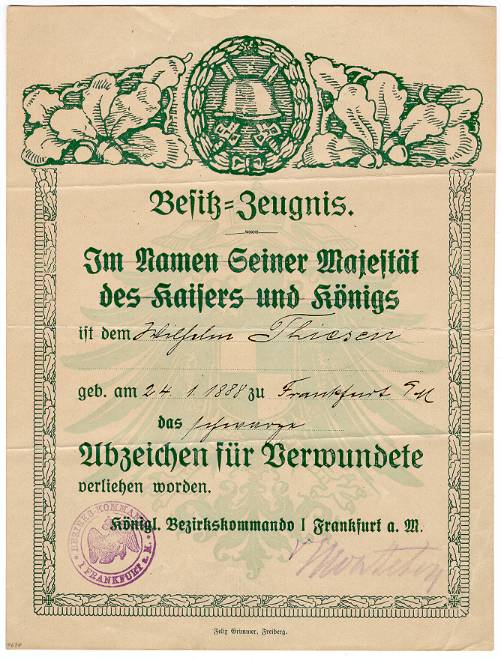
 0
0 -
Larger and higher scans are available if anybody wants them.
Part 2 reverse....

 0
0 -
Second part obverse...
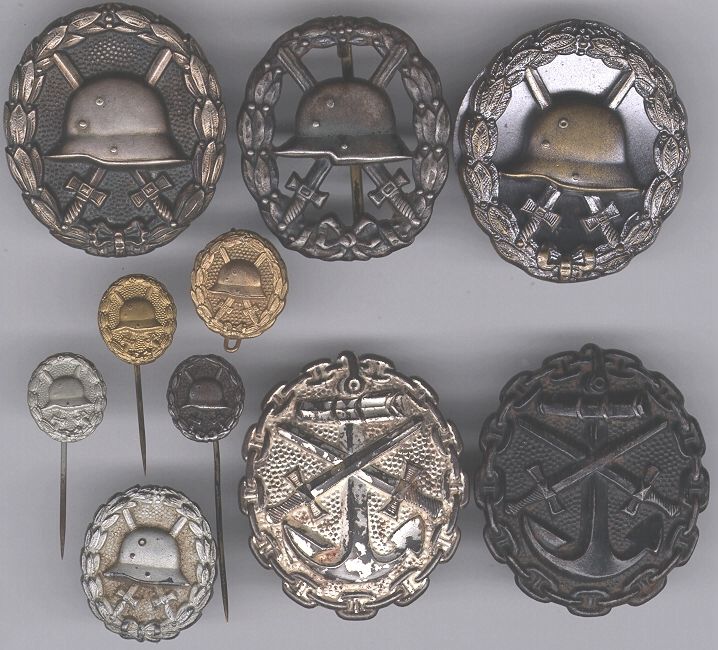
 0
0 -
-
Hi,
I'll add my small collection of Imperial Wound Badges to this thread. I've actually been quite focused in this area for a change. I'll post in two parts. Still looking for a Gold Naval Wound Badge I'm comforatble with. Also want to get some of the rayback examples and some more half-size / prinzen examples.
Regards
Mike K
PS: re the DRGM examples, from what I've seen the black grade is not that uncommon but the silver and gold grades can be tougher to find. Fyi, all 3 grades of the DRGMs below are steel/magnetic.
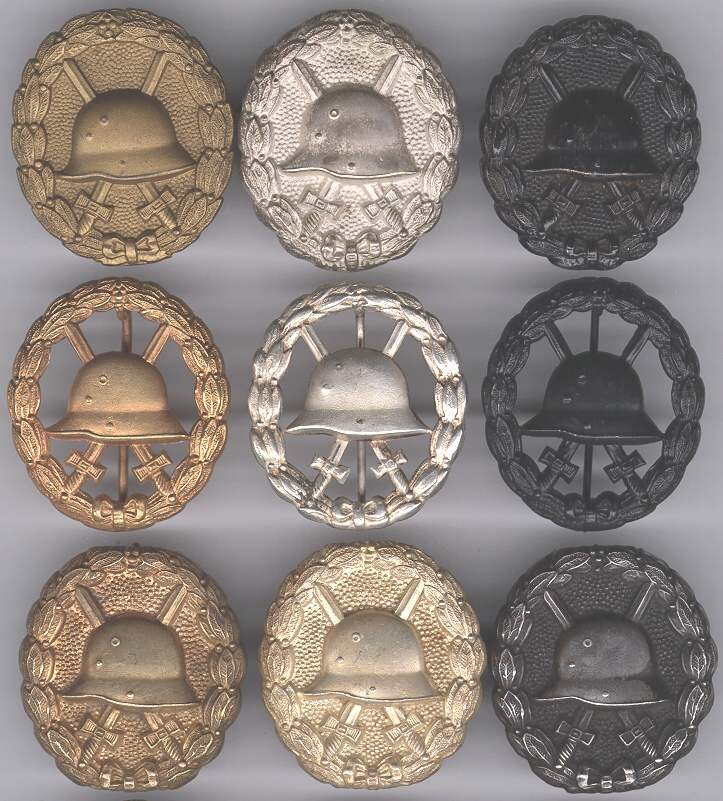
 0
0 -
It does not appear to be one of the solid silver examples. It is quite thick and heavy. I really like the wear on the pin where is has rubbed against the uniform loop (hinge end of the pin). Still waiting to find out who the KM officer was that wore this example and which AuxCr (Thor or Michel) he served on.
Reverse...
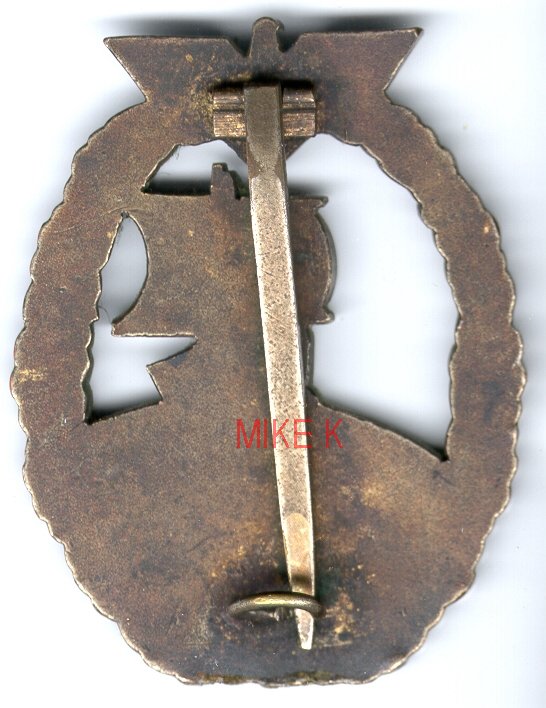
 0
0 -
And now for something different (no apologies for the red text).
Obverse....

 0
0 -
Sorry for this blurry scan - I can assure you that it is not repaired, although it appears messy around the catch.
Reverse...
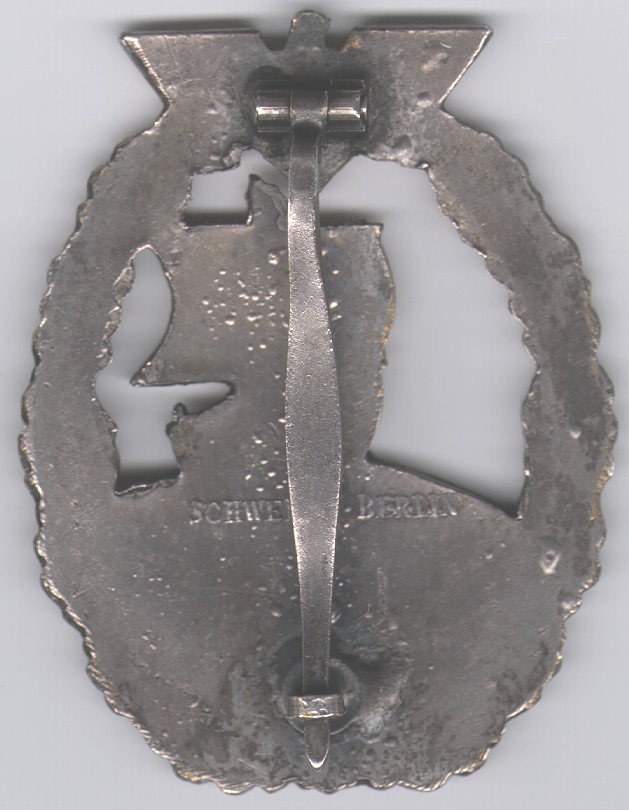
 0
0 -
Hi,
I won't add another tombak Schwerin or unmarked "Juncker" to this thread, but I'll add a couple that haven't been imaged so far.
First up, an earlier zinc Schwerin with heavily plated reverse.
Regards
Mike K
PS: George, that last one looks OK (nothing screams repro) but I don't know the maker - definitely not an unmarked Schwerin though.
Obverse....
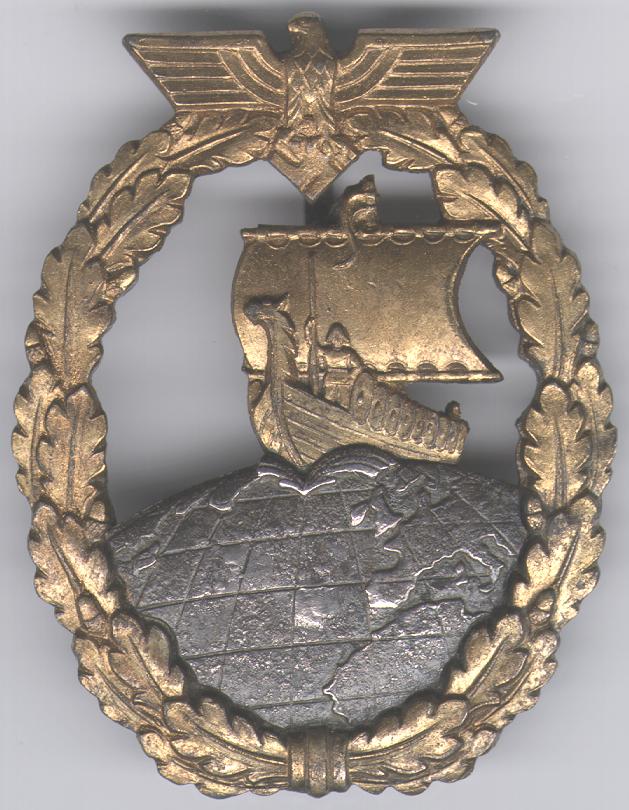
 0
0 -
Hi,
These badges are difficult to evaluate from images as, like the GB semi-hollow examples, there are some very good repros in circulation. This one looks like it might be OK, although imo the images aren't good enought to see fine obverse detailing. I do have some very minor issues with the form of the numbers in the number box on the silver example presented.
Regarding the rivets coming through the tank, this is a KNOWN GENUINE method of attachment. Notice that the placement deliberately coincides with the center of a couple of the track wheels. Examples of this type have been obtained directly from German veterans. If you need to see one in print, try and get hold of Joerg Hormann's "Uniforms of the Panzer Troops; 1917-to the Present". He shows a Bronze 25 of this type attributed to Cavalry Captain Ludwig, Baron von Heyl (Reconnaissance Unit 36) - P86 of the ?A5 sized English language hardback edition.
Regards
Mike K
0 -
Hi,
I have to say I'm a sceptic of 3-rivet Osangs. The one imaged here looks OK on the obverse but the reverse looks soft (in post#3 look at the indentation made by the end of the pin into the back of the badge, just below the hinge) and the hinge/pin/catch assembly imo just does not look right - although the images are certainly not great.
Reini, you asked for a link - there's one on Mike Pinkus' site;
http://groundassaultbadges.homestead.com/Gallery.html
I have to admit the reverse hardware on that one looks more believeable than your example.
Regards
Mike K
0 -
What do you gentlemen think of this unmarked 1914 Iron Cross in 1st Class? It appears to have been manufactured during World War II judging by the shape, pin, hinge, and clasp configuration. Your valuable input is solicited. . .
Hi Bill,
I pretty much agree with your comments, both on period of construction and possible manufacturers. Nice example!
Regards
Mike K
0 -
Hi,
My first impression on seeing the reverse of this example, in particular the hinge and the way the pin is attached to the hinge, is that the hardware assembly strongly resembles one of the fake Imperial and TR EK1 types that are currently flooding the market. The core detail on the cbverse does not look great either imo - certainly not pre-1900 quality!
Regards
Mike K
PS: found a good match to the pin on a bad DK fake, in case there were any doubts!
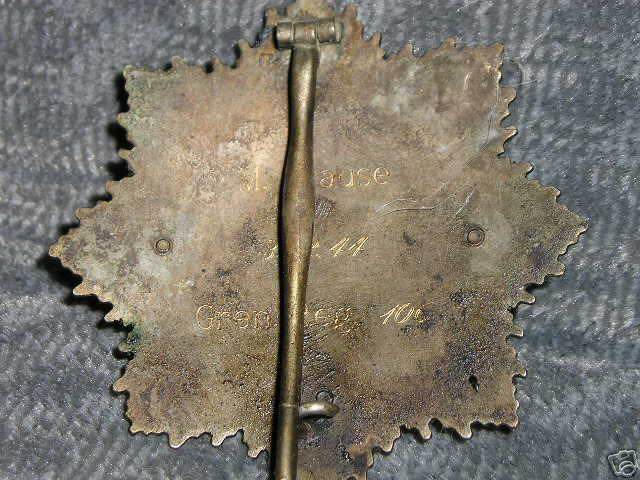
 0
0 -
Hi Sal,
The badge and mini have already been covered but the case is a curiosity. I agree that the lower insert looks strange. What has not been mentioned is the upper insert. I have a repro case at home that has a stiff foam "padding" behind the silk. If you use you fingernail to scratch the foam, it WILL NOT spreing back into place. On genuine cases, the padding for the upper insert is usually made of a soft "spongy" material (eg old cotton wadding) that will spring back. I don't like the looks of the effects of scratching the upper insert on this case from your image.
Regards
Mike K
0 -
Hi Jim,
The cross looks OK from the front, although the ridges on the beading at the outer arm joins aren't clear. If the pin is steel (magnetic) then it's probably fine. I have heard example with non-steel pins are "suspect".
Regards
Mike K
0 -
Hi,
As promised, some scans of my needle-pin EK1 - and I mean NEEDLE pin (painfully pointy!).
Regards
Mike K
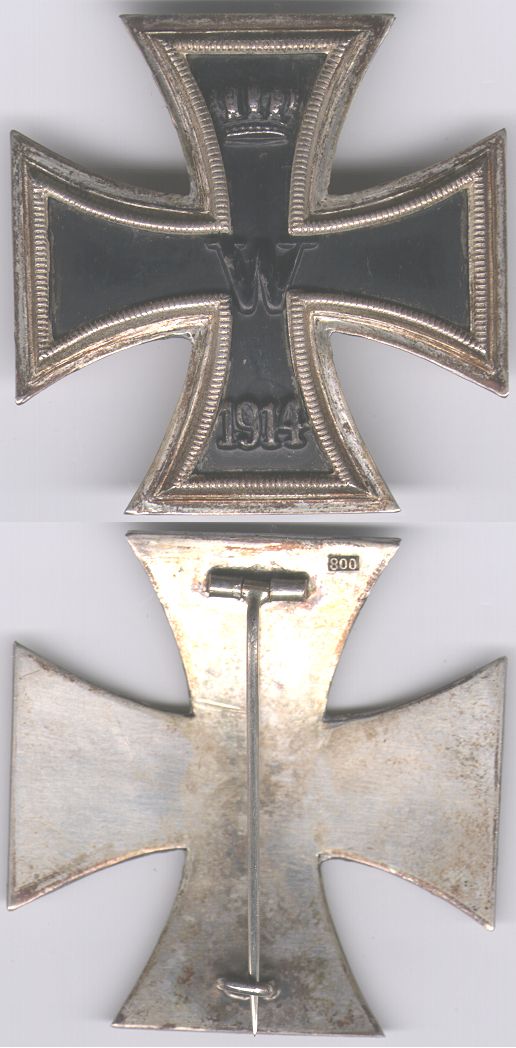
 0
0 -
Thanks Rick,
I have an EK1 with a very similar reverse hinge/pin setup and incuse relief 800 stamp (stamp in a different location though). I wanted to see if the cores matched but unfortunately no luck - definitely different. I don't think my needle pin example is repaired (I could be wrong of course) - needle pin EK1s are known but definitely uncommon (eg AWS pillow-backs). Will post some pics tomorrow.
Regards
Mike K
0 -
Hi Rick,
Do you happen to have an obverse shot/scan of your EK1 handy that you could post?
Regards
Mike K
0 -
Hi Jim,
That's a good start to 1914EK1 collection! Honest and uncleaned with an old character repair. Watch out, they can grow on you!
Regards
Mike K
0 -
And to conclude...
You'll note that the obverse of the two badges share the same (or very similar) die flaws in the chain wreath. Both badges share the same characteristic small catch. On the second badge, you can see that these badges originally had a needle pin and an unusual folded hinge (similar to that found on WW2 Wound Badge, but a lot thiner/finer).
My conclusion from all of this is that this flimsy hinge/needle pin/small catch assembly was used by S&L Post WW2 and that any other S&L Badge with this hinge/pin/catch setup is probably of post-WW2 construction. I certainly would not buy one.yo
Regards
Mike K
PS: I should add that the German seller was only asking 20-30 Euro each for all grades of the WW1 Marine Wound Badge and that the badge is made from brass/tombak. I do not know exactly how/why he knew who produced them and when. Why spin a story to sell a restrike as a restrike though?!
PPS: Please post away with any comments!
0 -
-
Initially I though the lumps may have been excess finish but it turns out they are part of the badge - ie excess metal.
Upon investigating the finish, I determined that the badge had been refinished. It originally had a nice but apparently worn lighter yellow gold plated finish which has been overpainted with a slightly darker metallic orange/gold paint - giving it a fire-gilt effect though. A Side Note - metallic paints and bare metal give a fire-gilt effect, so be careful when judging finish on fire-gilt badges in general!
I left most of the finish intact but I did look carefully around the hinge area and sure enough, there was lead solder under the re-painted hinge area - indicating a repair. This explains the apparently authentic (WW1 vintage) hinge/pin - they are replacements. The pin fits perfectly into the catch though, so it was a fairly good repair job.
Next stage was to search and try and find other examples. Eventually I did but the news was not good. I found a German auction seller with all three grades of the badge for sale. The badges shared the "lumps" in the chain wreath AND the small catch. The seller described them as being produced by S&L in the 50s/60s - ir they are post-WW2 restikes. Probably from original but damaged dies - hence the excess metal in the chain wreath. I've since seen several others.
I've misplaced his pics but I'll load the pics of another example - better quality image. Keep in mind that the finish on this example is not good. The finishes on the other examples (Black, Silver and Gold) looked very nice.
Obverse....
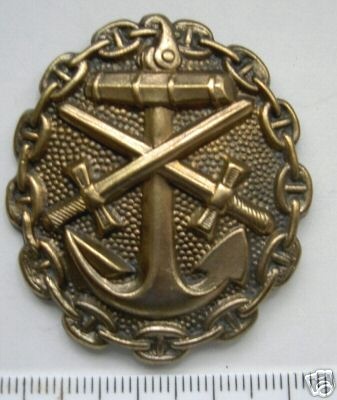
 0
0


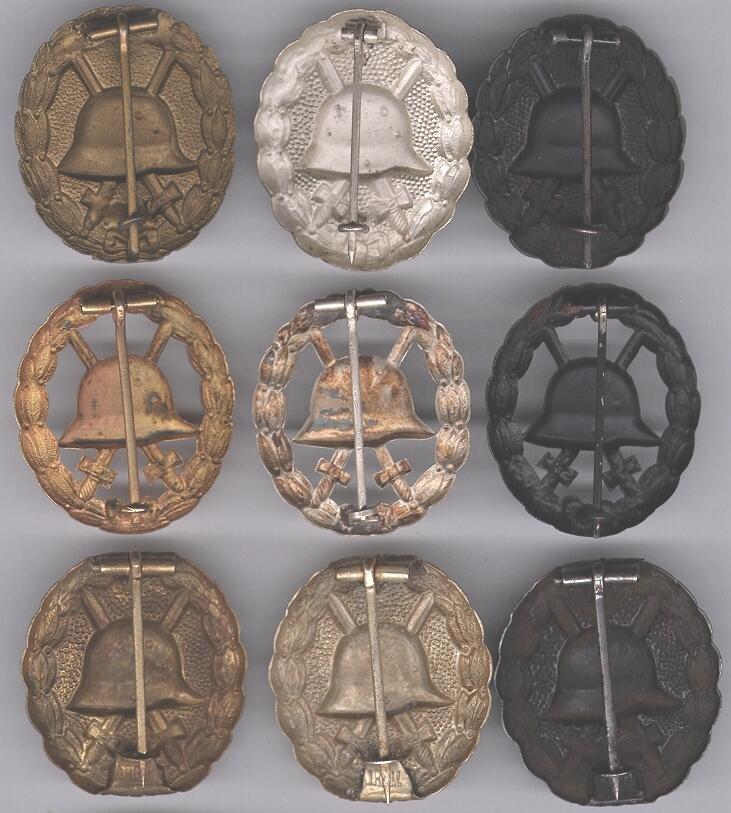
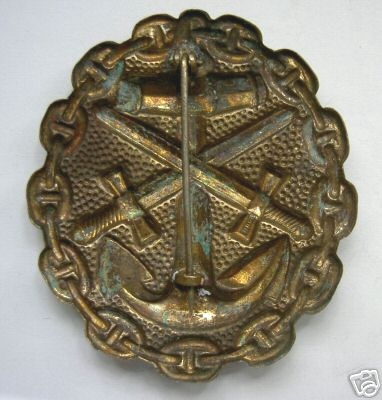
PAB 25
in Germany: Third Reich: Wehrmacht Medals, Decorations & Awards
Posted
Hi Peter,
Your comments regarding questionable, fantasy and/or reproduction badges in references is very valid. However I don't feel it's valid to write off a whole reference because of the inclusion of one bad item. Trust me, if that were the case no-one would use Angolia's reference at all for the simple inclusion of his Seekampfabzeichen der Luftwaffe (which I've had the "good fortune" to personally handle in the late 80s). That's why I mentioned several unrelated references, in conjunction with direct German veteran acquisitions.
Re angolia, in my edition (Second Printing, Feb 1985, the one with Hans Ulrich Rudels diamonds awards in colour of the front cover), the 100 PAB at the bottom of P89 has the rivets visible from the front.
Although Niemann is a dealer, he features more than one of this type in his catalogue so it may be worth asking him what his experience with direct German veteran acquisitions of this type is.
I've already looked into the pre-45 existence of these badges and formed my own opinion. I'm not trying to be argumentative here and I realise this is a gentleman's forum but it's also a discussion forum and I would feel uncomfortable by being quiet when eye-brow raising comments are made. I don't like seeing a badge sceptically evaluated by apparently uninformed opinions/observations - which to be honest is the way I read post #s 2, 3 and 5.
For the record, I do not own an example of this type (in any grade) however I would if the right badge came along at the right time and at the right price! I have handled them though.
Regards
Mike K
PS: Here's a badge you may want to ask Chris Boonzaire about. He sold it back in 2002 (wish I'd had the spare money to pick it up at the time!);